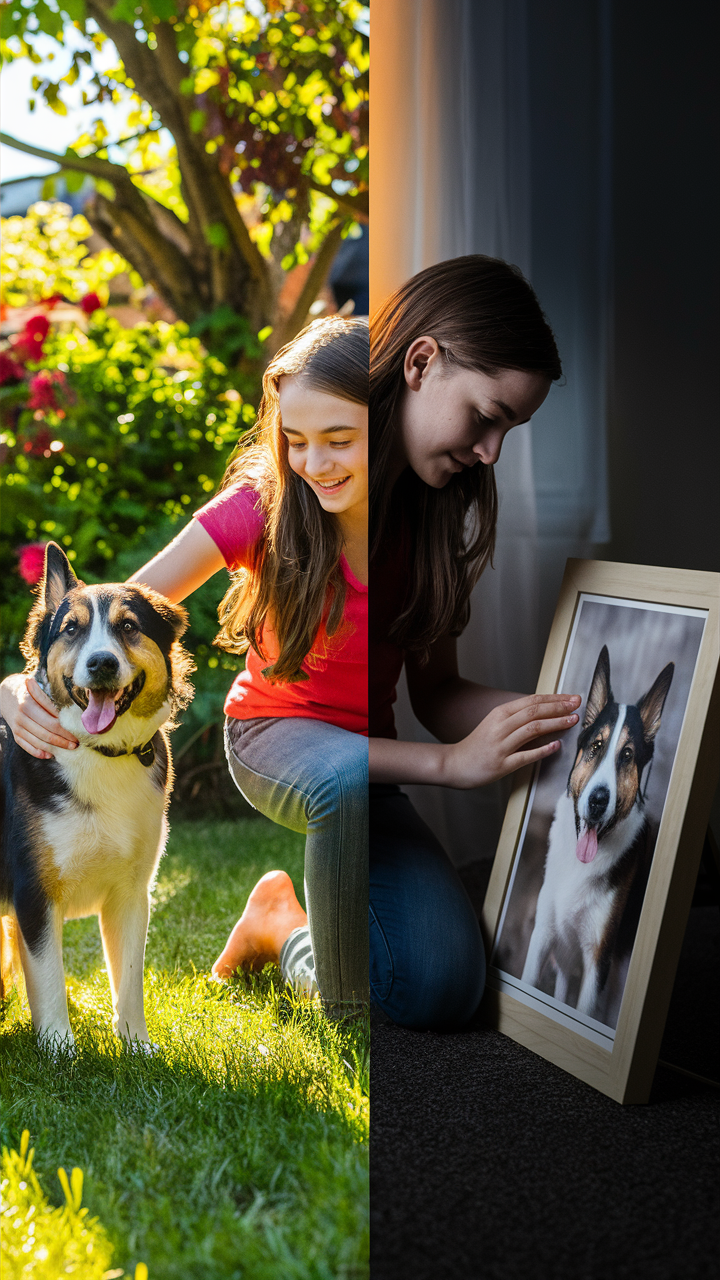Introduction
I petted the dog is a simple phrase, but it’s packed with past tense usage that can be quite revealing. Understanding past tense is crucial in English writing, as it helps narrate actions that have already occurred, setting the tone and timeline for the story. When writers use phrases like I petted the dog, they anchor the narrative in a specific time frame, helping readers visualize and comprehend the sequence of events more clearly. This understanding is not just about knowing when something happened but also about creating a coherent and engaging story that resonates with readers on a linguistic level.
Continuing with our example sentence, let’s delve into how the past tense enhances storytelling. Whether you’re writing a novel, a blog post, or even recalling a simple experience like when you pet the cat yesterday, mastery of verb tenses transforms simple recollections into vivid storytelling. By exploring different forms such as pet vs. petted, writers can choose the right style for their narrative. Moreover, clarity in using terms like pet and petted—where one indicates ongoing action and the other a completed action—helps avoid confusion, ensuring that readers follow the story as intended. These subtleties not only enhance the readers’ experience but also reflect the writer’s grasp of language nuances, crucial for effective communication.
Key Takeaways
- Understanding past tense is vital for narrating events that have occurred, aiding in setting the story’s timeline and enhancing reader comprehension.
- Mastering verb tenses such as past, present, and future is crucial for clear narrative crafting, with each tense playing a distinct role in storytelling.
- The use of past tense in writing establishes a historical context, allowing readers to perceive events as completed and adding depth to the narrative.
- Choosing the correct form between pet and petted is essential for clarity, as these terms represent ongoing and completed actions respectively.
- Petted, being the past tense of “pet,” should be used to denote past affectionate interactions, which is crucial for maintaining narrative consistency.
- Avoiding common mistakes in tense usage ensures accuracy in writing, highlighting the importance of proofreading and familiarization with verb conjugations for clear communication.
Learn the Difference Between Past Tense in Writing

Past tense is fundamental in English writing as it serves to chronicle actions that occurred previously. It provides a framework for readers to understand the time and sequence of events within a narrative, establishing a clear temporal context. By utilizing past tense, writers enable a smooth flow of events, enhancing reader comprehension and engagement. However, many often question the use of past tense over present tense. It is essential to remember that each has its place; past tense offers a way to convey completed actions, while present tense can indicate ongoing processes.
Understanding verb tenses in English
Verb tenses in English outline when actions take place, playing a crucial role in how stories are told and understood. There are three primary tenses: past, present, and future, each with its own set of rules that guide narrative structure. A solid grasp of these tenses allows writers to craft clear and effective stories that say much about their ability to handle complex narrative forms.
How past tense affects storytelling
The use of past tense in storytelling introduces a historical dimension, letting the reader visualize events as completed. This approach not only adds depth to the narrative by providing necessary background but also aids in building a connection between the past events and the current scenario. It is a powerful tool that can transform mere events into compelling stories with rich contexts.
The Word Pet vs Petted in Past Tense

The past tense of “pet” can vary between “petted” and “pet,” and understanding when to use each form is crucial for clear and precise writing. This choice often hinges on the narrative style and context, where each option serves a specific purpose. Someone might ask, “Why don’t we just use ‘pet’ for all past actions?” Yet, clarity in such grammatical details enhances the readability and professionalism of the text, especially in formal writing. It’s important to learn the difference to accept and answer any questions effectively.
Key Differences Between ‘Pet’ and ‘Petted’ in Writing
Usage and Formality:
- “Pet” is used to describe ongoing or habitual actions in the present tense, suitable for less formal or conversational contexts.
- “Petted” is the past tense form, used to narrate completed actions, typically seen in more structured and formal narratives.
Grammatical Consistency:
- Using “petted” maintains grammatical consistency in past tense storytelling, ensuring clarity for the reader about the timeline of events.
- “Pet” in past tense scenarios can lead to confusion unless clearly framed by context.
Narrative Impact:
- “Petted” provides a definite sense of completion, helping to paint a clear picture of past events.
- Using “pet” in ongoing scenarios keeps the narrative active and immediate, engaging the reader in the unfolding events.
Cultural Preferences:
- “Petted” is more commonly used in American English, adhering to the standard past tense conventions.
- “Pet” as a past action might appear in more casual or regional varieties of English, reflecting a more relaxed grammatical structure.
This list highlights the distinctions and proper uses of “pet” and “petted” in different writing contexts, aligned with the topic of understanding their usage in past tense narrative.
Usage of Pet as a regular verb
In English, the verb “pet” typically follows the pattern of regular verbs, adhering to conventional conjugation rules. This makes “petted” the standard past tense form, though “pet” is also acceptable depending on the context and consistency required by the narrative. Knowing when to use each form can greatly improve the clarity and flow of writing, ensuring that readers understand the actions described without confusion.
Conjugation of Pet in past tense
When conjugating “pet” in the past tense, writers have the option to choose between “petted” and “pet.” While “petted” is predominantly used in American English for its clear past tense indication, “pet” is often seen in more casual or colloquial contexts. Mastery of these distinctions not only aids in maintaining grammatical accuracy but also enriches the narrative by aligning the language with the story’s tone and setting.
The Word Petted in Past Tense

“Petted” is the established past tense form of the verb “pet,” commonly used in American English to describe a past action of gently stroking or touching an animal or person. This usage, such as in “She petted the dog lovingly,” illustrates a clear, conventional use that aligns with grammatical standards. It offers precision in narration, ensuring that readers recognize the completion of the action, thereby enhancing the clarity and flow of the narrative. This meticulous approach is particularly top in formal contexts, where each word should please the ear and never heard phrases should go back for revision.
Definition and usage of Petted
“Petted” specifically denotes the action of caressing or stroking gently, making it a suitable choice when detailing interactions with animals in narratives. This term is often used in detailed descriptions to convey affection, as in “She petted the cat after it jumped onto her lap,” offering a clear picture of the past event. The precision of “petted” helps maintain consistency and clarity in storytelling, making it easier for readers to visualize and connect with the narrative.
When to use Petted instead of Pet
“Petted” should be selected over “pet” when the action being described is clearly in the past and has been completed, particularly in instances of affectionate interaction. This distinction is crucial for maintaining tense consistency in writing and ensures that the narrative remains logically sound and easy to follow. It is the preferred form in scenarios like “She petted the dog lovingly,” where the past action of petting is emphasized, highlighting the affectionate nature of the interaction.
Difference Between Pet and Petted

Understanding the difference between “pet” and “petted” is crucial for accurate tense usage in English. “Pet” is used for describing ongoing or future actions, while “petted” is exclusively used for past actions that have been completed. These terms are not interchangeable, and using them correctly can significantly enhance the precision of narrative details.
Clarifying the distinction between the two words
“Petted” serves as the past tense and past participle of “pet,” indicating that an action has been completed. In contrast, “pet” refers to ongoing or future actions, often used to describe habitual or intended interactions with animals. Understanding this distinction is key to maintaining clarity and accuracy in both written and spoken English, ensuring that the temporal aspects of actions are communicated effectively.
Examples of using Pet and Petted correctly
Using “pet” and “petted” accurately can bring clarity to narrative descriptions. For example, saying “She often pets her cat before bedtime” uses “pet” to describe a regular, ongoing action. On the other hand, “Yesterday, he petted the dog for hours” correctly uses “petted” to indicate a completed action from the past. These examples show how proper tense usage can provide clear and accurate descriptions in storytelling.
“Understanding when to use ‘pet’ versus ‘petted’ clarifies not just your grammar but your story’s timeline. ‘Petted’ confirms the action is complete, which can be essential in storytelling to maintain past narrative consistency.” – Mignon Fogarty
Common Mistakes and Misconceptions
Mixing up “pet” and “petted” when using past tense is a frequent error in English writing. While “pet” is commonly used for present actions, “petted” is the appropriate form for describing actions that have already occurred. Ensuring the correct use of these verbs enhances clarity and accuracy in storytelling, helping to avoid confusion among readers.
Exploring common errors related to Pet in past tense
A typical mistake is using “pet” in situations that call for “petted,” particularly in past tense narratives. This confusion often stems from the irregularities in English verb conjugation, leading to inconsistent application across different texts. Addressing these errors is crucial for clear communication, as consistent mistakes can lead to misunderstandings and diminish the quality of writing.
Tips for avoiding confusion in writing
To prevent confusion in writing, it is essential for writers to diligently proofread their work, checking for proper verb conjugations. Utilizing grammar tools can also aid in identifying and correcting errors, ensuring narrative accuracy. Additionally, practices such as reading the text aloud can highlight any inconsistencies, helping writers refine their command of verb tenses and improve their overall writing skills.
Conclusion
In conclusion, I petted the dog showcases the precise use of past tense in English, a fundamental skill that guides readers through a story’s timeline clearly and effectively. It’s essential to choose the right verb forms, such as pet vs. petted, to maintain narrative clarity and avoid confusing the audience. As we have seen, a simple action like petting a dog can reflect a broader understanding of verb conjugations and their impact on storytelling.
By adhering to these principles, writers can ensure that their narratives are not only accurate but also resonate with readers on a deeper level. Emphasizing the correct usage of terms like pet and petted—where one indicates an ongoing action and the other a completed one—can dramatically enhance a reader’s experience. Ultimately, the goal is to provide a seamless and engaging story by mastering these linguistic nuances, whether you’re writing about a dog or cat, formal or informal settings, or any similar scenario that relies heavily on past tense accuracy.


